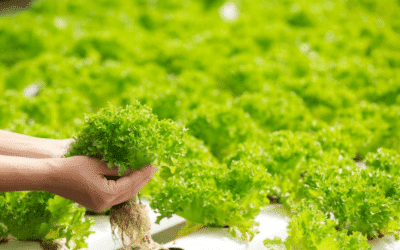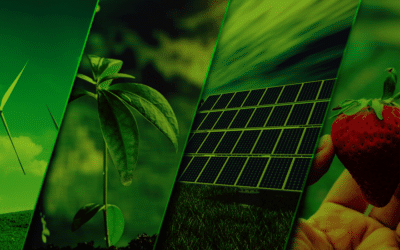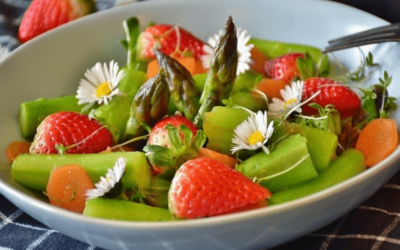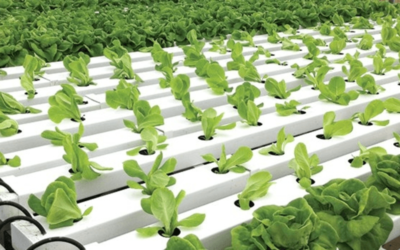Today, many developers use the term ‘green’ to describe their buildings. But what are the elements that really make a house eco friendly? Does it only refer to using solar power for heating your water? Or harvesting rainwater in a cleverly hidden tank? Seeing as the term gets thrown around so often, we decided to give you a better understanding of what makes a home green.
If you’re serious about green and eco friendly living, there are six general aspects you should consider when building or buying a home. Each of these aspects possesses other smaller elements that are optional. In the end, you will need to decide which ones you can afford, and which ones you don’t really need. Here are the six we have highlighted—with a brief description of each.
Generating energy
Photo-voltaic solar panels are the obvious answer to reducing your reliance on the grid. But you should consider your needs carefully. How much energy would you need, to generate power for all of your appliances? Be realistic and look at ways to reduce the amount of energy you require. Ask yourself whether it’s worth investing in energy efficient appliances. Finally, work with a developer that understands how to utilise orientation, shading devices and insulation to lower your requirements.
- How much energy will you need?
Measuring the amount of energy you need is step one. Step two is working out how much renewable energy you need to generate in order to maintain your household. It’s simple math and the answers are out there. Remember to do these sums thoroughly before you add this feature to your home—or purchase a home that has it already implemented.
- Should you also buy energy efficient appliances?
Appliances that are designed to use less power can be extremely helpful too. However, this is not an option for everybody. If you have to balance your comfort and convenience, then these appliances are not going to make your life better. Living cheaply, doesn’t mean you have to live less comfortably. Rather generate lots of free, renewable power than having to lower your lifestyle.
- Should you work with a green smart home developer?
Green smart home developers have already worked with green vendors. They’ve had their bad experiences with the dubious ones and finally found teams of individuals who deliver what they promise. That’s why it can be beneficial to work with these developers for advice. If you are looking for someone to help you get it right the first time, speak to someone who’s already made all the mistakes and come out on top.
Harvesting rainwater
After energy, a sustainable water supply is essential for any green smart home. Every effort must be made to make the collection of rainwater as efficient as possible. This requires expertise in the placement of pipes and catchments. Once again, developers need to have local knowledge of the rainfall patterns in your area to ensure maximum collection.
The most efficient rainwater harvesting methods are the cheapest. Finding a way to collect as much water as possible is the trick to maximising your efficiency and your savings. Remember, the more water you collect, the more you will benefit from your return on investment.
Once again, it’s important to use a proper expert to do this implementation in your home. Working with a green smart home developer who knows a good vendor, or finding a vendor with an excellent reputation is the key to getting the best system.
There are many important aspects to this green feature:
- Positioning of the catchments
- Installation of the pipes
- Choosing the right collection point
- Having high quality equipment all round
Only true experts will give full attention to detail with ALL of these aspects. So be sure to speak to the right people about installing your rainwater harvesting system.
Choosing materials
A home that is truly green is one that takes every part of the building process into consideration. And that includes the materials that are used in its construction. Bamboo is an example of a sustainable alternative to wood. It has a much lower impact on the environment but is just as durable. It can be used for flooring, counter tops and in the construction of shaft covers.
Having a truly green smart home means using materials that have little impact on the environment. We’ll use bamboo as an example here. There are three questions to ask when choosing material:
- Does harvesting this material take a lot of energy?
In the case of bamboo, harvesting has a significantly lower impact on the environment than other methods. These include cutting down large trees, mining, farming, etc.
- Will the removal of this resource from nature negatively affect the planet?
Unlike trees, bamboo does not play that much of an important role in dissipating greenhouse gasses. Bamboo isn’t a huge oxygen producer either, so removing it has a very low impact on our planet.
- Does this resource grow or generate fast enough to sustain its demand?
Bamboo grows incredibly fast! If and when the demand for bamboo increases, growing more will be quick and simple. This makes it incredibly sustainable as a building material.
Insulating the rooms
Being green and eco friendly is not only about harvesting natural resources for living. It’s also about maintaining what you have without needing to continually generate more. This is especially true in the case of heating and cooling your home. That’s where insulation comes in.
There are many ways you can insulate a room. For now, let’s just look at five:
- Ceiling insulation
By insulating your home’s ceiling, you ensure that warm air cannot escape. Even though your ceiling is solid, air escapes through it much easier than you realise. This is an especially useful feature during winter. Warming up a room takes time, and that heat will not leave the room so easily.
- Floor insulation
Floor insulation is another way to keep the temperature in your home constant. But more importantly, floor insulation ensures that your under-floor heating or cooling system (hydronics radiant heating and cooling system) retains its effectiveness.
- Wall insulation
Probably the most effective way to retain a home’s desired temperature is through wall insulation. This is often done by using products such as Lambdaboard within a cavity in each exterior wall.
- Window & glass door insulation
So much air escapes through closed doors and windows. In the case of windows and glass doors, even sealing the sides will not prevent air from escaping through the glass itself! Double glazing offers the solution here. By trapping the air within a small cavity in the window pane, your rooms will retain the temperature you set for them.
- Pipe insulation
A homeowner who has truly adopted a green and eco friendly lifestyle will always insist on pipe insulation. This has a number of benefits:
- Less electricity is needed to reheat water that would otherwise have cooled down faster
- Water within pipes retains its heat so that water is ultimately saved by not having to run the tap for long
- Pipe insulation also prevents your cold water pipes from reaching room temperature too quickly. This again saves you on having to run the tap longer when the water is required.
Consider your garden
Gardens take up a lot of time and effort to maintain. Even if you exclude the watering of a garden, there’s still the pruning, treating and mowing that goes into that maintenance. All of these things have an impact on the environment. So what’s the secret to owning a garden that’s as green as your home?
One of the biggest suggestions we put forth to our clients is the importance of planning indigenous trees and plants in a garden. Why do we see this as a green aspect? Because:
- Indigenous plants need very little maintenance
- They attract natural wildlife and birds to your garden
- These plants require very little watering
- They grow well together
- They stay green all year round—that means less replacement gardening for you
Learning about invasive plant species is also something you can do to be a more responsible homeowner. There is tons of information on the Internet about this subject. Fortunately for the environment, this topic is getting a lot of attention at the moment.
As you can see, gardening is a major part of living green. If your garden isn’t green, time to get a revamp. Green, eco friendly gardens are an essential part to reducing your carbon footprint.
Thinking about the little things
Another truly green aspect of any home is how easy it is to maintain the little things. We’re talking about cleaning, repairing, treating, painting, polishing… all those things that require time, energy, and chemicals.
Living green means thinking ahead about small aspects of maintenance. Today there are countless options available to homeowners and developers. Let’s take a brief look at some of them:
- Low maintenance roof tiles
You can now purchase uncoloured roof tiles. This means that you will never have to paint them. It also means that they will never fade from the sun or rainfall. There are no side effects either. These tiles are durable, aesthetically pleasing and cost effective.
- Stainless steel fittings
Something else to consider is that stainless steel is a great option for certain metal fittings within your home. Stainless steel is easy to clean. It’s also rust resistant and doesn’t require chemical treatment to maintain it.
- Less lawn area
Maintaining a large area of lawn can be very expensive. It also takes up loads of energy and machine power to do so. If you want to truly live as green and eco friendly as possible, why not consider replacing lawn space with garden decor? This can include pretty rocks & pebbles, pavers, stepping stones, ground cover plants, gravel areas.
Retrofitting existing homes with these features can be challenging. But green smart homes are becoming more popular. Purchasing a brand new green home is already an option that is available to those who appreciate the benefits of green and eco friendly living.








